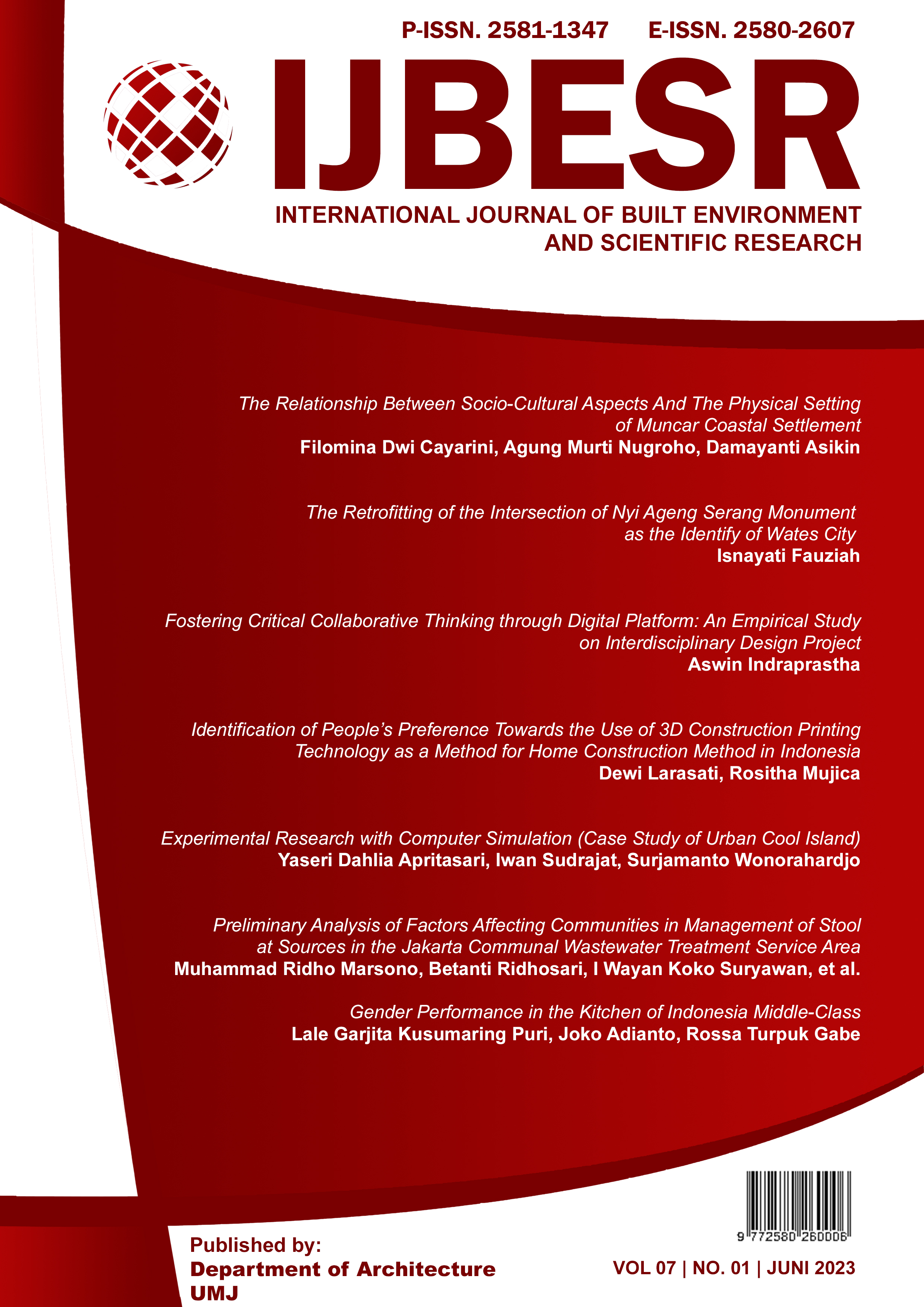The Retrofitting of the intersection of Nyi Ageng Serang Monument as the Identity of Wates City
DOI:
https://doi.org/10.24853/ijbesr.7.1.7-18Keywords:
Retrofitting, commercial corridor, identity, Wates cityAbstract
The development of a city is inseparable from the city's identity, making the City of Wates need an identity to make it easier to recognize, remember, and to increase the interest of visitors to visit. City's identity can be formed through good regional arrangement and character. The intersection of Nyi Ageng Serang Monument is one of the strategic areas in Wates City which has quite busy traffic conditions and is a commercial area that is the center of the city's economic growth. As a strategic area that had the potential to be the identity of the City of Wates, this area must have good outdoor spatial planning and character. The research aims to develop guideline model based on retrofitting. Data collected through observation and walk-through analysis methods to reveal existing problems and local potential. The model to retrofit are applied based on outdoor spatial planning standards and local potential. Retrofitting of the intersection of Nyi Ageng Serang Monument as the identity of Wates City can be applied through: (1) the arrangement of the corridor spatial planning based on the standard (consisting of street zones, green zones, pedestrian zones, and development zones); and (2) the application of potential local elements in the area to create the character (the shape of building facades, street furniture, colors, and materials).References
Lynch, K. M. (1960). The image of the city / Lynch Kevin.
Rapoport, A. (1977). Human Aspect of Urban Form. New York: Pergamon Press.
Norberg-Schulz, C. (1980). Genius Loci: Towards A Phenomenology of Architecture. Rizzoli.
Moughtin, C., Oc, T., & Tiesdell, S. (1999). Urban Design: Ornament and Decoration.
Bishop, K. R. (1989). Designing urban corridors.
Pemerintah Kabupaten Kulon Progo Tahun 2017. (2017). Rencana Pembangunan Jangka Menengah Daerah Kabupaten Kulon Progo Tahun 2017-2022.
Dixon, T., & Eames, M. (2013). Scaling up: The challenges of urban retrofit. Building Research and Information, 41.
Dunham-Jones, E., & Williamson, J. (2009). Retrofitting Suburbia: Urban Design Solutions for Redesigning Suburbs. Hoboken, NJ: John Wiley & Sons.
Southeastern San Diego Commercial Corridor Urban Design Guide.
C. Charlwood. (2004). Torbay Streetscape Guidelines. Torbay Council.
Milwaukie Transportation System Plan. (2007).
Urban Design Toolkit Third Edition (Third Edition). (2006). Ministry for the Environment.
Pradaning, A. N. S. (2018). Penataan Visual untuk Memperkuat Ciri Khas Koridor Perdagangan Nonongan Kota Surakarta. Institut Teknologi Sepuluh Nopember.
Hertanto, I. (2017). Penataan Ruang Luar Koridor Jalan K.H. Ahmad Dahlan Yogyakarta. Institut Teknologi Sepuluh Nopember.
Rehan, R. M. (2012). Sustainable Streetscape as An Effective Tool in Sustainable Urban Design. Department of Architecture Helwan University.
Engwicht, D. (2005). Mental Speed Bumps: The Smarter Way to Tame Traflic. Envirobook, Annandale, NSW.
Jacob, A. B. (1995). The Great Streets. MIT Press.







